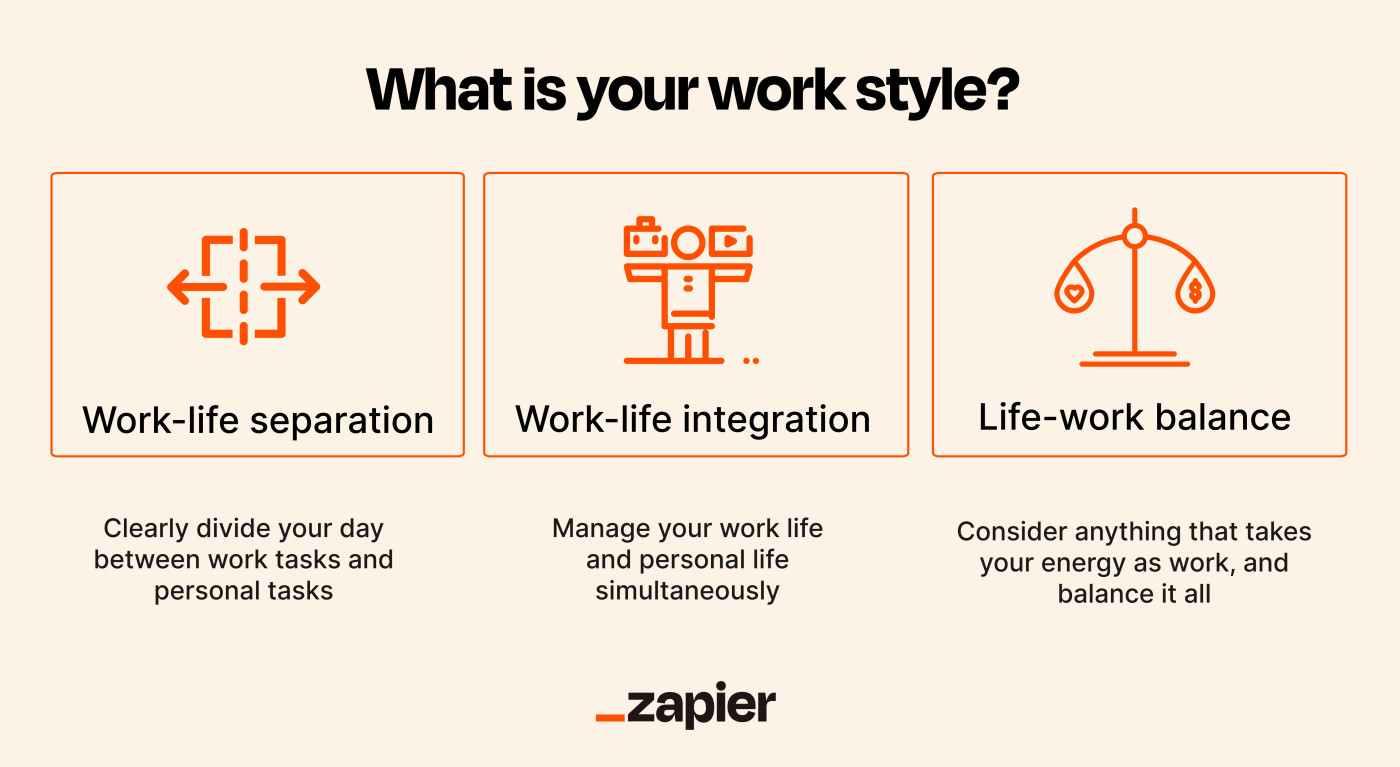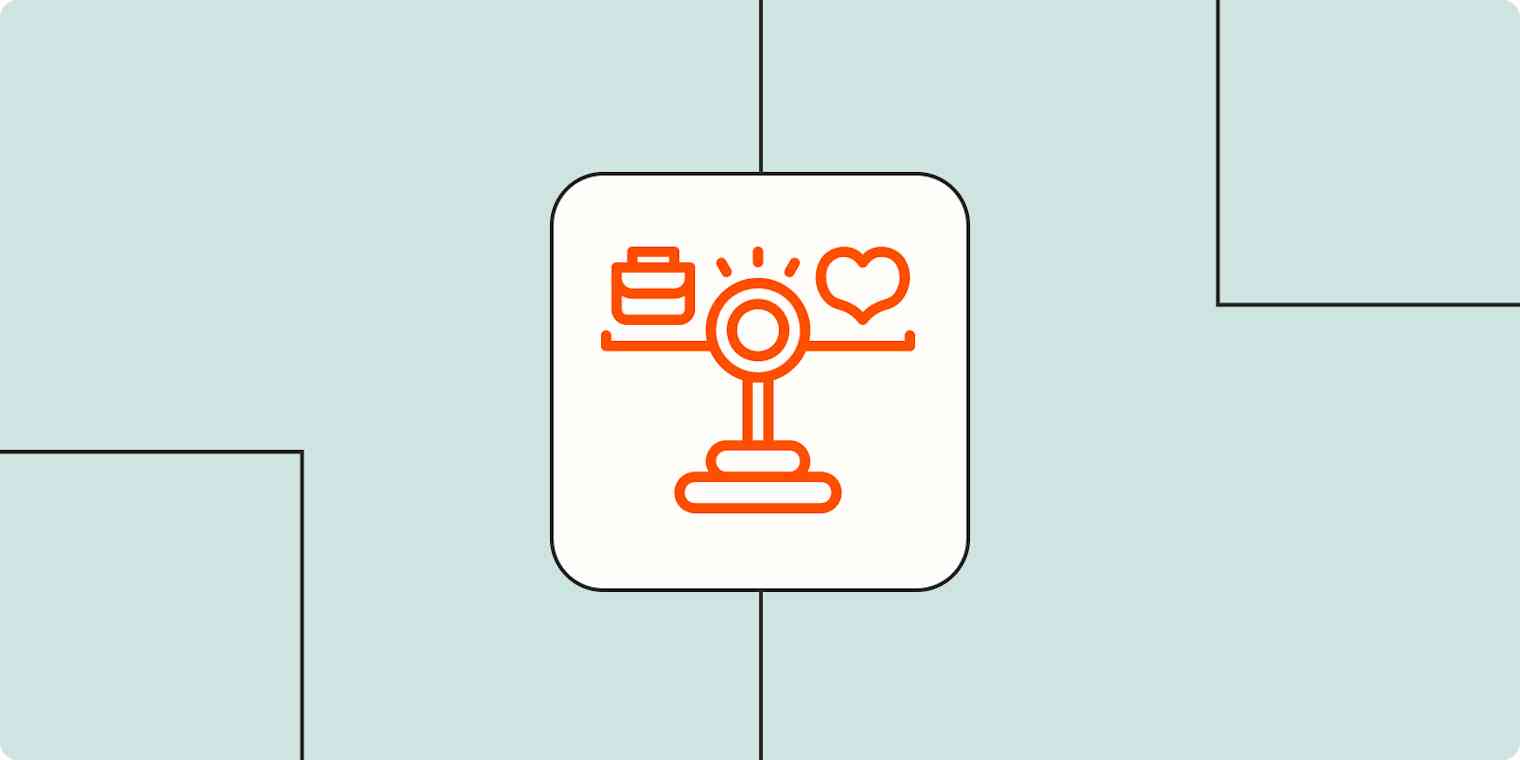As a digital nomad, the logistics of how I work change all the time. I also live with multiple chronic illnesses, which makes routine a necessity. Finding that balance between embracing chaos and structure has been a huge challenge, but it's also forced me to get to know myself—and my work style—really well.
Personal circumstances or financial needs may dictate your work life, but understanding how you work best naturally is important. Here's how to identify your working style.
What is a work style?
Work style simply means the way you approach work. It includes everything from your habits and behaviors to the preferences, personality traits, and skills that make up your work life.
This might include:
When you work and take breaks
Where you work and your ideal work environment
How you approach or schedule work during the day/week
What role your personal life plays in your work schedule
Sometimes the differences in work style are as basic as what side of the desk you arrange your pens on, but it's usually more complex than that. Knowing your work style—and being able to adjust your work life to meet those needs—can make a huge difference physically and mentally.
Here are three work styles that can help you work—and rest—more productively.

1. Work-life balance (or work-life separation)
Work-life balance or separation refers to the practice of dividing your day between work and personal tasks. It's a type of compartmentalization where you set boundaries to prevent one area of your life from bleeding into the other.
Work-life balance or separation isn't just about keeping your personal life out of your work life—it's also meant to protect your personal time, so you can be fully present in all aspects of your life as needed.
Pros of work-life balance
Straightforward and uncomplicated
Concentrates on fewer tasks at once
Naturally suited to setting clear boundaries
Cons of work-life balance
Often less flexible than other work styles
Can be harder to manage with evolving work environments or family demands
Here's how work-life separation might look for different types of workers.
In-office workers
You leave home, clock into work, stay at work and work on work, then clock out, go home, and manage your personal life. Doctor's appointments might happen during lunch breaks, but for the most part, you keep anything personal to before or after work.
Remote or hybrid workers
If you work from home some or all of the week, you might establish clear work boundaries, like setting up a private home office and sticking to the same routine. You take lunch and clock out at the same time each day, and your computer and/or work phone are turned off on weekends.
Freelancers or business owners
This will look different for everyone, but it often comes down to having a structured routine around work hours, location, and schedule. For example, you might work at your local coworking space five days a week, only take calls before 5 p.m., and not work at all on weekends.
How do I know work-life separation is for me?
If you prefer to keep your work and personal lives separate, and find it hard to stay focused on more than one thing at once, you might prefer this work style. Multi-tasking isn't for everyone.
Just remember: it's highly difficult, if not impossible, to completely separate your work and personal lives. So choosing this work style may require some compromises, especially if you have family at home.
2. Work-life integration
Work-life integration is the opposite of work-life separation: it means partly or fully combining your work and personal lives, so there's no clear separation. Instead of keeping both areas of your life as far from each other as possible, you manage both simultaneously.
This doesn't mean that there are no boundaries in place at all. In fact, setting boundaries can be even more important when you have to constantly multi-task.
Pros of work-life integration
More fluid and flexible
More variety in scheduling during workdays and workweeks
Ability to "fit in" stuff between work or work around personal needs
Cons of work-life integration
Harder to maintain boundaries between work and personal lives
Requires a certain level of multi-tasking
Here's how work-life integration might look for different types of workers.
In-office worker
You still clock in and out, but your workday might look slightly different. Doctor's appointments and errands like grocery shopping often happen during slow work times if you have a more flexible schedule. You may work from home occasionally or take work home at night.
Remote or hybrid worker
You bounce between work and home or home and a coworking space for some peace and variety. When you're home, you often work chores and errands into your day and plan projects and meetings around family events. You might also put in a few hours on weekends to balance things out.
Freelancer or business owner
You might take a meeting at 9 a.m., then head out to grocery shop before coming back in time to polish and send off a project before lunch. Afternoons could include cleaning or working out while you attend an industry webinar, or cooking dinner with your significant other before putting in a few hours of work before bed.
How do I know work-life integration is for me?
If you prefer to do tasks as they come up, and don't mind working from home or out of the office with interruptions to your workday, this work style might be a good fit. Integrators tend to like a more flexible approach, especially because it makes things like childcare, appointments, and other obligations easier to manage.
Again, this work style doesn't put either your work life or personal life first. It's more about when and how each of those activities and tasks happens throughout your day. An integrator, for example, can just as easily be a workaholic as someone who prefers to prioritize their home life.
3. Life-work balance
Life-work balance is a much newer concept, based on the idea that we need to re-examine our relationship to work. According to Remote's guide on the topic, life-work balance suggests that "work" isn't just tasks you do to earn income, but anything that requires your energy and time daily, like household tasks or caring for family members. It's meant to be a "comfortable balance between the things a person needs to do and the things they want to do."
During the height of COVID, millions of people realized that daily life tasks can take up a lot of time and energy. When they combined that with work, it led to a lot of stress—and that's putting it mildly. So people began finding ways to reduce that stress by prioritizing mental health or taking advantage of remote work to travel as digital nomads.
Pros of life-work balance
Encourages you to learn which daily activities are "need-to-do" vs. "want-to-do"
Shows you potential areas of stress in your life
May help you create healthier lifestyle habits
Cons of life-work balance
Not always accessible to people
May be easier for non-traditional workers or require big lifestyle changes
Here's how life-work balance might look for different types of workers.
In-office worker
You realize that work and home obligations leave you little time for yourself, so you invest in a professional cleaner or after-school program to help free up your time. At work, you negotiate a half day off each week, which allows you to explore your favorite hiking trails with a group of friends.
Remote or hybrid worker
After scoring a remote/hybrid job, you realize that you've been missing some quality family and hobby time. So you make plans to spend the summer working from the Caribbean with your partner and kids and carve out some alone time on the weekends to read fanfiction and body surf.
Freelancer or business owner
Because of the high costs of living in your area, you decide to use the concept of geoarbitrage—moving to a lower-cost area for a better quality of life— so your income can go further. This allows you to save for early retirement, afford better healthcare, and fulfill your dream of a three-month trip to India.
How do I know life-work balance is for me?
This choice is a bit more nuanced because it's really more about a shift in mindset. If you feel like you're struggling with burnout, constantly stressed, and always your last priority, this could be a good time to make some adjustments.
What is your work style?
Choosing a work style gets complicated when you think about how you prefer to work versus how you have to work, which aren't always the same thing. But again, we're talking about how you work best.
Think about:
How you've worked before. Did you gravitate toward a certain work style at previous jobs? What did your preferred schedule look like? Consider the times in your life when you felt the most productive and least stressed.
How you need to work right now. Your current work habits might not match your preferences, but they can provide important clues. What is and isn't working for you right now, and can you trace it back to a certain work style?
How you want to work in the future. Picture your ideal life. What does that look like? How do work, family, and other obligations fit in? And what about the stuff you want to do?
And remember: you don't have to pick one work style over another. I've spent years flip-flopping between being a separator and an integrator, and right now, I'd call my work style a hybrid of the two. Parts of my life, like my work hours and daily routine, are pretty structured with strong boundaries in place. But I still occasionally join Zoom calls on my lunch break, work on weekends, or randomly take a midweek day off. This works well for me, as I need both structure and flexibility to manage my health.
Ideally, I'd like to focus on life-work balance because that seems like the healthiest approach for me. But it may not be for you. There is no "right" choice—it's whatever works best for you.
My work style has evolved quite a bit in the last ten years, and I have no doubt yours will as well. After all, needs and health change, not to mention your job situation, and what served you during one life stage might not be the best fit later on. What's important is finding what works best for you now—that knowledge will help you make the adjustments you need to down the road.
Interested in learning more about work styles? Here's some recommended reading:






